
 |
|
Dive The SS Sagaing(www.DiveSriLanka.com)
RESTRICTED HIGH SECURITY AREA, NATURAL HARBOUR, Trincomalee
By Dharshana Jayawardena with Sri Lankan Navy, Dept. of Archaeology, Maritime Archaeological Unit (CCF), Marine Environment Pollution Agency (MEPA)
Special Survey for bio diversity, archaeological value and tourism valueDepth: 0 to 20 metres
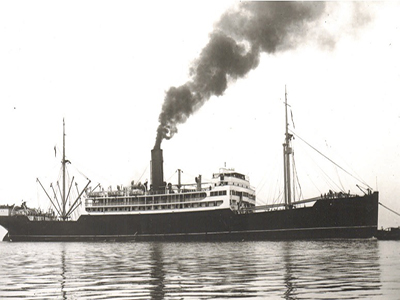 The SS Sagaing (1942) (c) Caledonian Maritime Research Trust |
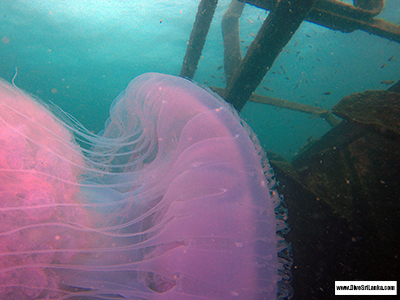 Several specimens of Lobonema smithii were found in the wreck |
|||||||
22-06-2018 : On April 9, 1942, during world war 2, the SS Sagaing was partially destroyed at the Trincomalee Harbor by the second attack of Ceylon by Imperial Japan. A year later the hull was sunk and converted to a pier and that’s the last we would have heard of it if not for the Sri Lankan Navies successful lifting of this massive 139m, 7994 ton Wreck and re-sinking in a different location; her original location to be reconstructed to a modern pier. In her new location she lies a couple of hundred meters from ashore, north of Elephant Island and lays at a depth of 10m (bow) - 20m (stern) and is resplendent with marine life after her move. For a 2.5 month old wreck in the new location, the marine life accretion around her hull was quite impressive. One specific resident was the large jellyfish Lobonema smithii. These jellyfish are incredibly beautiful both in form and in movement. This dive was part of a special government survey to classify her bio diversity value and archaeological value. As this is a highly secure restricted area controlled by the Sri Lankan Navy, the wreck is not open for the general public yet. In floating such a massive shipwreck that was almost hundred years old (built in 1924) and relocating it the Sri Lankan navy has not only accomplished an incredible feat of engineering but also done something that has been rarely done in the world before. Wreck provides for a very interesting multilevel dive. Her bow lies around 9-10 metres of water while the stern lies at about 19-20 meters. Her bulkheads are still intact and provides plenty of exploration opportunities. |
||||||||
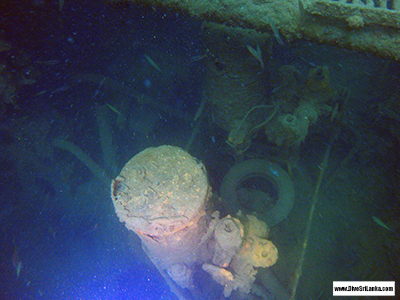 |
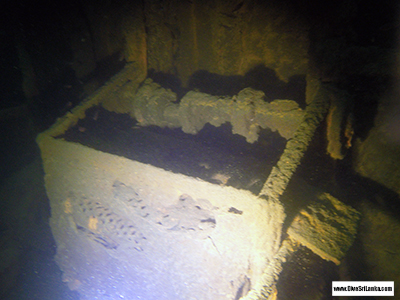 |
|||||||
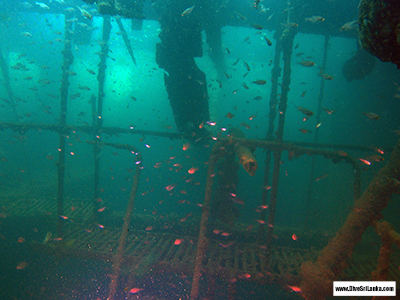 |
|
|||||||
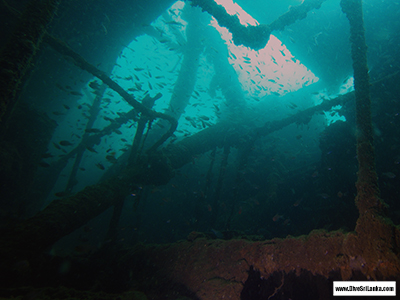 |
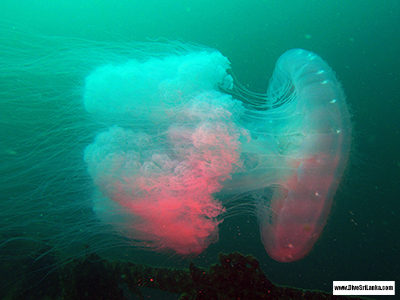 |
|||||||
 The rudder post at the stern |
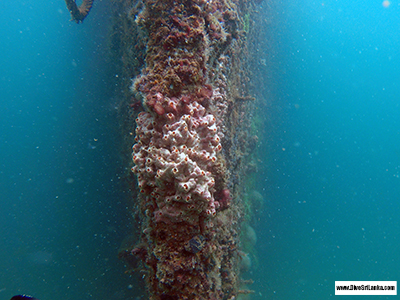 At the bow of the wreck, keel level |
|||||||
|
Photo Credits: (c) www.DiveSriLanka.com |
||||||||